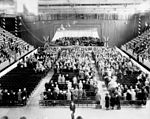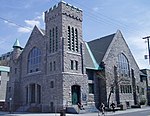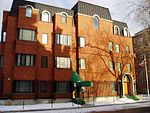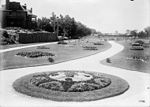Ottawa Curling Club

The Ottawa Curling Club is an historic curling club located on O'Connor Street in the Centretown neighbourhood of Ottawa, Ontario, Canada. It is the oldest curling club in Ottawa, established in 1851 by Allan Gilmour as the Bytown Curling Club. The Club first played on the Rideau Canal until 1858. It subsequently moved to different locations around the city until finally settling at its current location on O'Connor in 1916. In 1931 the club was expanded to the current capacity of 5 curling sheets. Artificial ice was also installed at that time. The club is home to 2017 World Champion and 2018 and 2022 Olympian Rachel Homan, and is the former home of 1998 and 1999 Junior Men's World Curling Champion and 2018 and 2022 Olympian John Morris. The Ottawa Curling Club is one of two clubs in Downtown Ottawa, the other is the Rideau Curling Club, which maintains a rivalry with the Ottawa.
Excerpt from the Wikipedia article Ottawa Curling Club (License: CC BY-SA 3.0, Authors, Images).Ottawa Curling Club
O'Connor Street, (Old) Ottawa Centretown
Geographical coordinates (GPS) Address Phone number Website External links Nearby Places Show on map
Geographical coordinates (GPS)
| Latitude | Longitude |
|---|---|
| N 45.41081 ° | E -75.69015 ° |
Address
Ottawa Curling Club
O'Connor Street 440
K2P 1W4 (Old) Ottawa, Centretown
Ontario, Canada
Open on Google Maps










